Lecture 10
Input Validation and classList Manipulation
Agenda
- Administrivia
- Reminder: CP 2 due today (git add/commit/push then turn in!)
- Sign up for the CP showcase! (CP1 showcase coming soon)
- Start HW 2 early!
- Final thoughts on DOM manipulation
- Input validation
- Manipulating classLists
DOM tree
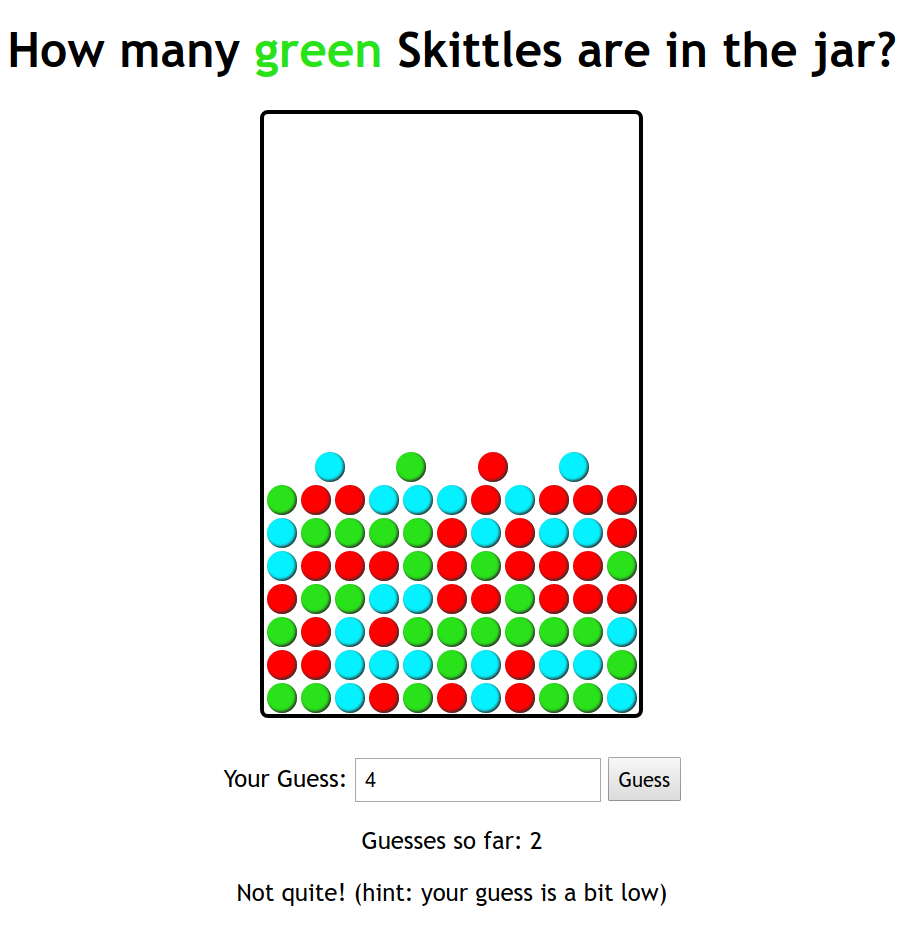
Think about the DOM tree structure of this page.
What would you draw this like?
How would you examine the elements of this page?
How would you add elements to the page?
How would you remove elements from the page?
Examining objects
Set a breakpoint in the initialize() function and refresh the page.

Then toggle the this: window object open to discover its contents
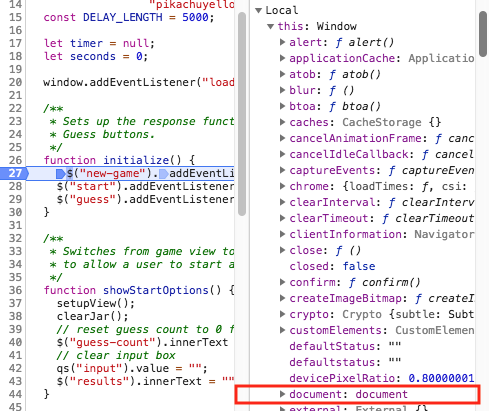
Traversing and Manipulating the DOM
We already know how to get an element of the DOM using document.getElementById(),
document.querySelector() and document.querySelectorAll()
We also know we can add things to the tree using appendChild(node) on
a DOM element.
The DOM also has
- properties and methods for traversing the tree
- methods for removing nodes from the tree
Review: Creating New Nodes
| Name | Description |
|---|---|
| document.createElement("tag") | creates and returns a new empty DOM node representing an element of that type |
| document.createTextNode("text") | creates and returns a text node containing given text |
// create a new <h2> node
let newHeading = document.createElement("h2");
// Add text to the node method 1
let newText = document.createTextNode("This is a new heading!")
newHeading.appendChild(newText);
// Add text to the node method 2
newHeading.innerText = "This is a newer heading!";
document.appendChild(newHeading);JS
Traversing the DOM Tree Manually
Every node's DOM object has the following (read-only) properties:
| Name(s) | Description |
|---|---|
| firstChild, lastChild | start/end of this node's list of children, may include text or comments |
| firstElementChild, lastElementChild | start/end of this node's list of children elements |
| childNodes | array of all of this node's children |
| nextSibling, previousSibling | neighboring nodes with the same parent, including whitespace nodes |
| nextElementSibling, previousElementSibling | neighboring element nodes with the same parent, skipping whitespace nodes |
| parentNode, | the element that contains this node |
Complete list of DOM node properties
Browser incompatibility information (IE6 sucks)
DOM Tree Traversal Example
<p id="foo">
This is a paragraph of text with a
<a href="page.html">link</a>.
</p>HTML
Element vs. Text Nodes
<div>
<p id="foo">
This is a paragraph of text with a
<a href="page.html">link</a>.
</p>
</div>HTML
Q: How many children does the div have?
A: 3
- an element node representing the
<p> - two text nodes representing "\n\t" (before/after the paragraph)
Q: How many children does the paragraph have? A: 3 (text, a, text)
Q: The a tag? A: 1 (text)
More modifying the DOM Tree
let p = document.createElement("p");
p.innerText = "A result!";
document.getElementById("the-place").appendChild(p);JS
Every DOM element object has these methods:
| Name | Description |
|---|---|
| parentNode.appendChild(node) | places the given node at end of this node's child list |
| parentNode.insertBefore(new, old) | places the given node in this node's child list just before old child |
| parentNode.removeChild(node) | removes the given node from this node's child list |
| node.remove() | removes the node from the page |
| parentNode.replaceChild(new, old) | replaces given child with new nodes |
Removing DOM elements... a decision
What happens if we don't remove the skittles when we start a new game?
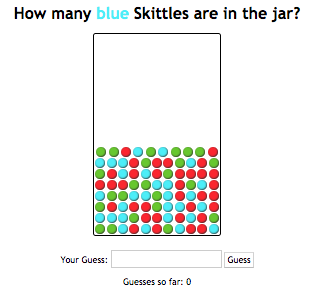
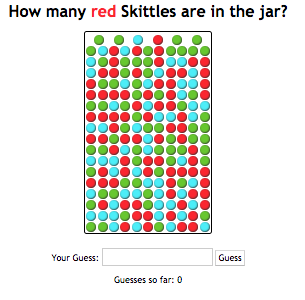
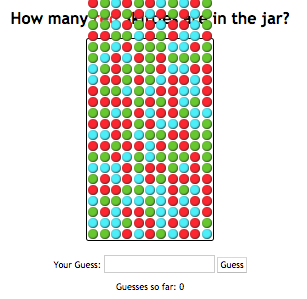
Two methods for removing elements
Method 1: get all of the DOM elements and remove them from the DOM
function clearJar() {
let skittles = qsa(".skittle");
for (let i = 0; i < skittles.length; i++) {
skittles[i].remove();
}
}JS
Or ... Method 2: Set the Jar's innerHTML to be empty!
function clearJar() {
$("jar").innerHTML = "";
}JS
Note: in general innerHTML hacking is bad
Why not just code this way?
document.getElementById("add").innerHTML = "<p>A result!</p>";JS
Bad code quality (maintainability) on many levels
- Not modular: HTML code embedded within JS
- What if you have a complicated new node (with many subchildren) to add?
- Error-prone: must carefully distinguish " and '
- Can only add at beginning or end, not in middle of child list
// Substitutes all children
$("add").innerHTML = "<p>A result!</p>";
// adds a node to the front of the list of children.
$("add").innerHTML = "<p>A result!</p>" + $("result").innerHTML;
// adds a node to the end of the list of children
$("add").innerHTML += "<p>A result!</p>";JS
One more: removing elements via the parent node
Let's add code to get rid of a skittle when we double click it...
What is the source element? A skittle (div)
What is the event we want to respond to? dblclick
What is the response? removeSkittle
What is the output/elements changed? the parent of the skittle (the jar)
//code added to addSkittle()
skittle.addEventListener("dblclick", removeSkittle);
...
// new function added (with JSDoc not seen here)
function removeSkittle() {
this.parentNode.removeChild(this);
}JS
Yes, you can also use remove(this); instead of removing
from the parent node.
Input Validation
A user interface is like a joke. If you have to explain it, it’s not that good.
Example
Can I, as a user, do anything "wrong" here?

But what about the guesses text box?

Solution 1: Add instructions (the user will likely not read)
Solution 2: Prevent the user from doing something they shouldn't
HTML Input Validation
You can add attributes to your <input> tags to help with validation
The Skittles code already has a attribute that restricts the input to a number
<input type="number">HTML
We can limit the up and down arrows with min (and max if we choose)
<input type="number" min=0>HTML
To insist that there is a value in the input field we can add required
<input type="number" required>HTML
To prevent a user from being able to type in erroneous values, we can add a
regular expression to the required attribute
<input type="number" required="\d+">HTML
Aside: What's a Regular Expression? (briefly)
A Regular Expression is way to specify a pattern to match.
We do not go into depth on Regular expressions in this class but they are fun to learn!
Handy resources include:
- Rubular for checking Regular Expressions
- Regex Crossword
- Examples
Now modify the CSS to display the error
input:invalid {
border: 2px dashed red;
}
input:valid {
border: 2px solid black;
}CSS

What fields on this site warrant what types of validation?
Other Input Validation
Other HTML5 input types that can prevent a user from entering in erroneous input are listed here and include:
- attributes on single line
inputfields - password
- search
- tel (for phone numbers)
- url
- other widgets
- select/option (drop down list boxes, single or multiple choice)
- checkbox
- radio buttons
- advanced widgets
- number
- range (slider)
- datetime-local
- month
- week
- time
- color

